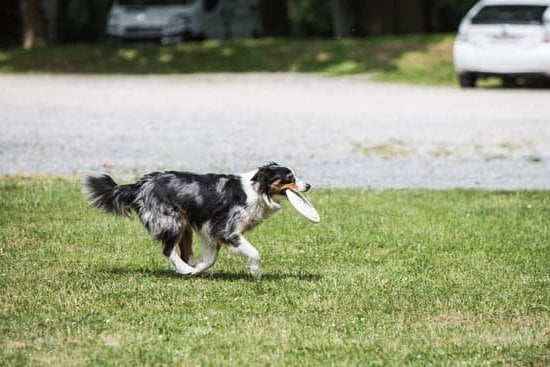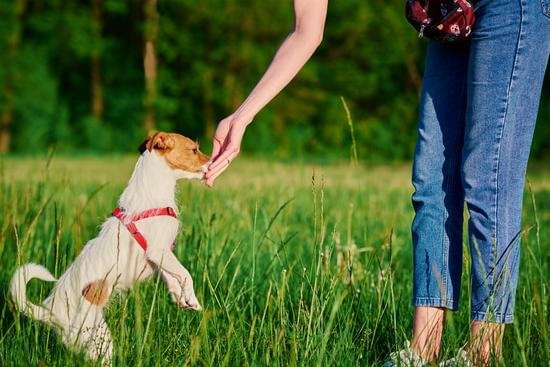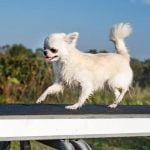Pitbulls are often misunderstood and unfairly labeled as aggressive dogs. However, with the right training and socialization, these loyal and loving animals can thrive in a variety of environments. One common concern many pitbull owners have is how to train their furry companions not to bite other dogs. This article aims to provide helpful tips and techniques for ensuring that your pitbull behaves appropriately around other pets.
Understanding Pitbull behavior is crucial in addressing any potential aggression towards other dogs. It is essential to remember that all dogs, regardless of breed, have individual personalities and tendencies. Pitbulls, like any other breed, require proper guidance and training to exhibit positive behaviors. By educating yourself on the unique characteristics of Pitbulls, you can better address any potential issues that may arise when interacting with other dogs.
There are many misconceptions surrounding Pitbull aggression, leading to an unfair stigma against these intelligent and affectionate animals. It’s important to dispel these myths and focus on providing proper socialization opportunities for Pitbulls from a young age.
Through positive reinforcement training techniques and controlled exposure to other dogs, Pitbulls can learn appropriate ways to interact without resorting to aggressive behavior. As responsible pet owners, it’s our duty to ensure our Pitbulls receive the training they need to become well-behaved members of our families.
Common Misconceptions About Pitbull Aggression
Pitbulls have gained a reputation for being aggressive and dangerous dogs due to various misconceptions surrounding the breed. One common misconception is that all Pitbulls are inherently aggressive and prone to biting other dogs. However, it is important to understand that a dog’s behavior is largely influenced by its environment, upbringing, and training rather than its breed alone. Like any other dog, Pitbulls can be well-behaved and friendly with proper socialization and training.
Another misconception about Pitbull aggression is that they have a “locking jaw” mechanism that makes them more dangerous than other breeds. This belief has been debunked by experts in veterinary medicine, as there is no scientific evidence to support the claim that Pitbulls have a locking jaw structure. In reality, Pitbulls have strong jaws like many other breeds, but their behavior largely depends on how they are raised and trained by their owners.
It is crucial for dog owners to educate themselves about responsible pet ownership and the specific needs of their individual dogs, regardless of breed. By understanding the misconceptions surrounding Pitbull aggression and learning proper training techniques, owners can help prevent unwanted behaviors such as biting other dogs.
Positive reinforcement, socialization, and consistent training are key elements in raising a well-adjusted and non-aggressive Pitbull. In the following sections, we will explore how to train Pitbulls not to bite other dogs using effective methods and strategies for behavioral modification.
Importance of Proper Socialization for Pitbulls
Proper socialization is crucial for Pitbulls to ensure they interact with other dogs and people in a positive manner. When Pitbulls are not properly socialized, they may exhibit aggressive behavior towards other dogs or individuals. This can be a result of fear, insecurity, or lack of exposure to new experiences. Socialization helps Pitbulls build confidence, learn appropriate behaviors, and develop positive interactions with others.
To train a Pitbull not to bite other dogs, start socializing them at a young age. Introduce your Pitbull to various environments, people, and animals to help them become familiar with different stimuli. This exposure will teach your Pitbull how to navigate new situations without feeling threatened or anxious. Additionally, positive experiences during socialization can help shape your Pitbull’s behavior positively and reduce the likelihood of aggression towards other dogs.
Incorporating obedience training into your Pitbull’s socialization process can also be beneficial in teaching them proper manners and commands. Basic commands such as “sit,” “stay,” and “leave it” can help you communicate effectively with your Pitbull and redirect their attention when interacting with other dogs.
Consistent training sessions combined with positive reinforcement techniques can reinforce good behavior and encourage your Pitbull to engage in non-aggressive ways when encountering other dogs. By investing time and effort into socializing and training your Pitbull, you can help them become well-adjusted pets that interact peacefully with others around them.
Basic Training Techniques for Pitbulls
Consistent Training
Training a Pitbull not to bite other dogs requires consistency and patience. It is essential to establish clear boundaries and rules from the beginning and consistently reinforce them. This includes setting expectations for behavior around other dogs and sticking to them during every interaction.
Socialization Exercises
One effective way to train a Pitbull not to bite other dogs is through proper socialization exercises. This involves exposing the Pitbull to different environments, people, and animals from an early age. By gradually introducing the Pitbull to other dogs in a controlled setting, you can help them learn appropriate behaviors and responses.
Positive Reinforcement
Using positive reinforcement techniques when training a Pitbull can be highly effective in eliminating biting behavior towards other dogs. Reward good behavior with treats, praise, or playtime to reinforce positive actions. This will teach the Pitbull that non-aggressive interactions with other dogs are rewarding and preferred. Be consistent in rewarding desirable behavior to encourage its continuation.
By incorporating these basic training techniques into your approach on how to train a pitbull not to bite other dogs, you can set your furry companion up for success in socializing with others safely and responsibly. With dedication and patience, you can help your Pitbull develop positive interactions with other dogs while ensuring their happiness and well-being.
Positive Reinforcement and Reward-Based Training for Pitbulls
Positive reinforcement and reward-based training are essential techniques when teaching a Pitbull not to bite other dogs. These methods involve rewarding good behavior with treats, toys, or praise, thereby encouraging the desired actions to be repeated. When it comes to addressing biting behavior in Pitbulls, positive reinforcement can be a powerful tool in shaping their behavior positively.
One effective way to train a Pitbull not to bite other dogs is through clicker training. This method involves using a clicker to mark the exact moment your dog exhibits the desired behavior, followed by giving them a treat as a reward. By consistently associating the clicking sound with rewards, your Pitbull will learn that not biting other dogs results in positive outcomes.
It is important to remain consistent and patient when using positive reinforcement and reward-based training with Pitbulls. Training takes time and repetition for it to be effective, so it’s essential to set aside dedicated training sessions regularly. By establishing clear boundaries and providing positive reinforcement when they behave appropriately, you can effectively teach your Pitbull how to interact with other dogs without resorting to biting.
| Key Point | Information |
|---|---|
| Training Method | Positive Reinforcement and Reward-Based |
| Technique | Clicker Training |
Exposing Pitbulls to Other Dogs in Controlled Environments
Gradual Exposure
When it comes to training a Pitbull not to bite other dogs, it is crucial to expose them to other canines in a controlled environment. One effective method is gradual exposure, starting with calm and well-socialized dogs before progressing to more energetic or assertive ones. This gradual approach allows the Pitbull to build confidence and positive associations with other dogs.
Supervised Play Dates
Organizing supervised play dates with other dog owners can also be beneficial in teaching a Pitbull how to interact appropriately with their furry friends. By supervising these interactions, you can intervene if any signs of aggression or unwanted behavior arise. Additionally, make sure that the play dates take place in a familiar and neutral territory for both dogs to minimize any territorial issues.
Positive Reinforcement During Interactions
During these controlled encounters with other dogs, use positive reinforcement techniques like treats and praise when your Pitbull displays good behavior. Rewarding them for staying calm, playing gently, and respecting boundaries will help reinforce positive behaviors while discouraging biting or aggression towards other dogs. Consistent reinforcement will help your Pitbull understand what is expected of them during social interactions and ultimately prevent biting incidents.
By following these methods of exposing your Pitbull to other dogs in controlled environments, you can effectively train them not to bite their canine companions. Remember that every dog is different, so be patient and consistent in your training efforts.
If you encounter challenges or feel overwhelmed, don’t hesitate to seek professional help from a certified dog trainer or behaviorist specializing in Pitbulls. With time and dedication, you can help your Pitbull become a well-behaved and socialized member of the canine community.
Managing Pitbull Playtime With Other Dogs
Pitbulls are known for their strong and tenacious nature, which can sometimes lead to aggressive behavior towards other dogs. However, with the right training and socialization techniques, you can help your Pitbull learn to interact peacefully with other canine companions. Here are some tips on how to manage pitbull playtime with other dogs:
- Start slow: Introduce your Pitbull to other dogs gradually, starting with one-on-one interactions in a controlled environment. This allows you to gauge their reactions and intervene if necessary.
- Supervise playtime: Always keep a close eye on your Pitbull when they are interacting with other dogs. This allows you to step in if play gets too rough or if any signs of aggression start to show.
- Monitor body language: Pay attention to the body language of both your Pitbull and the other dogs during playtime. Look for signs of stress, fear, or aggression, and separate them if needed.
By following these steps and being vigilant during playtime, you can help prevent any potential conflicts between your Pitbull and other dogs. Remember that proper socialization and positive reinforcement are key in training your Pitbull not to bite other dogs.
Remember, every dog is different and may require individualized training techniques. If you are struggling with managing your Pitbull’s behavior around other dogs, don’t hesitate to seek professional help from a certified dog trainer or behaviorist. They can provide valuable guidance and support in helping your beloved pet become a well-mannered and sociable companion.
Correcting Pitbull Behavior When Biting Other Dogs
Training your pitbull not to bite other dogs is essential for their safety and the well-being of other animals. When a pitbull exhibits aggressive behavior towards other dogs, it is crucial to address and correct this behavior promptly. One effective way to do this is through positive reinforcement training. By rewarding good behavior and discouraging negative behavior, you can help your pitbull learn how to interact with other dogs in a more appropriate manner.
It is important to start by identifying the root cause of your pitbull’s aggression towards other dogs. This could be fear, territoriality, or simply lack of socialization. Once you understand why your pitbull is behaving aggressively, you can tailor your training approach accordingly. For example, if your pitbull is fearful of other dogs, you can gradually expose them to new canine friends in a controlled environment to help them overcome their anxiety.
When correcting biting behavior in pitbulls, consistency is key. Make sure to set clear boundaries for acceptable behavior and always enforce these rules consistently. If your pitbull does exhibit aggressive behavior towards another dog, it is important not to punish them physically as this can exacerbate the problem. Instead, use redirection techniques and positive reinforcement to encourage more appropriate behaviors.
If despite your best efforts, your pitbull continues to display aggressive tendencies towards other dogs, it may be time to seek professional help. A certified dog trainer or animal behaviorist can assess the situation and provide specialized guidance on how to address your pitbull’s aggression effectively. Remember that with patience, proper training, and consistent positive reinforcement, most pitbulls can learn how to interact peacefully with other dogs.
Seeking Professional Help for Aggressive Pitbull Behavior
When dealing with aggressive behavior in pitbulls, seeking professional help is crucial to ensure the safety of your pet and others. Professional dog trainers or behaviorists can provide specialized guidance and support to address the root cause of your pitbull biting other dogs. Here are some steps on how to find and work with a professional to train your pitbull not to bite other dogs:
- Research: Start by researching reputable dog trainers or behaviorists in your area who have experience working with pitbulls. Look for professionals who use positive reinforcement techniques rather than harsh punishments.
- Consultation: Schedule a consultation with the potential trainer or behaviorist to discuss your pitbull’s behavior issues. Be honest about the aggression problems your dog is exhibiting towards other dogs.
- Customized Training Plan: A skilled professional will assess your pitbull’s behavior and create a customized training plan to address the specific triggers causing aggression towards other dogs. This plan may include desensitization exercises, counterconditioning techniques, and structured socialization sessions.
Working with a professional allows you to gain insight into why your pitbull may be exhibiting aggressive behavior towards other dogs and provides you with the tools and resources needed to train them effectively. By following the guidance of a trained expert, you can safely and responsibly address your pitbull’s aggression issues while promoting positive interactions with other dogs.
Remember that every pitbull is unique, so it’s essential to seek individualized advice and support from a professional who understands the breed-specific traits and behaviors. With patience, consistency, and expert guidance, you can train your pitbull not to bite other dogs and foster a harmonious relationship between your pet and their canine companions.
Conclusion
In conclusion, training a Pitbull not to bite other dogs requires a combination of understanding their behavior, dispelling common misconceptions about their aggression, and providing proper socialization. It is crucial to use basic training techniques, such as positive reinforcement and reward-based training, to encourage desired behaviors in Pitbulls. By exposing them to other dogs in controlled environments and managing their playtime appropriately, owners can help their Pitbulls learn how to interact peacefully with others.
It is important for owners to correct any undesirable behavior promptly and consistently when their Pitbull shows signs of aggression towards other dogs. Seeking professional help from a certified dog trainer or animal behaviorist may be necessary if the issue persists or escalates. With patience, consistency, and dedication, it is possible to train a Pitbull not to bite other dogs effectively.
Ultimately, creating a happy and well-behaved Pitbull involves ongoing training, socialization, and positive reinforcement. By following the tips outlined in this article on how to train a Pitbull not to bite other dogs, owners can ensure that their furry companions are safe, friendly, and enjoyable members of the community. Remember that every dog is unique, so it is essential to tailor your training approach to suit your Pitbull’s individual needs and personality.
Frequently Asked Questions
How Do I Stop My Pitbull From Attacking Other Dogs?
When dealing with a pitbull who displays aggression towards other dogs, it is crucial to address the underlying cause of the behavior. Proper socialization, positive reinforcement training, and seeking guidance from a professional trainer or behaviorist can help prevent aggressive tendencies in your dog.
How Do You Discipline a Pitbull for Biting?
Discipline should focus on redirecting and reinforcing positive behaviors rather than punishing the negative behavior. Consistent commands, rewards for good behavior, and avoiding physical punishment can help teach your pitbull not to bite. Obedience training and teaching bite inhibition are also essential for preventing biting incidents.
How Can I Train My Dog Not to Bite on Other Dogs?
Training your dog not to bite other dogs involves a combination of socialization, obedience training, and managing their environment. Encouraging appropriate interactions with other dogs through controlled introductions, rewarding calm behavior, and providing outlets for their energy can help prevent biting incidents. Consistency and patience are key in shaping your dog’s behavior positively towards other dogs.

Welcome to the blog! I am a professional dog trainer and have been working with dogs for many years. In this blog, I will be discussing various topics related to dog training, including tips, tricks, and advice. I hope you find this information helpful and informative. Thanks for reading!





